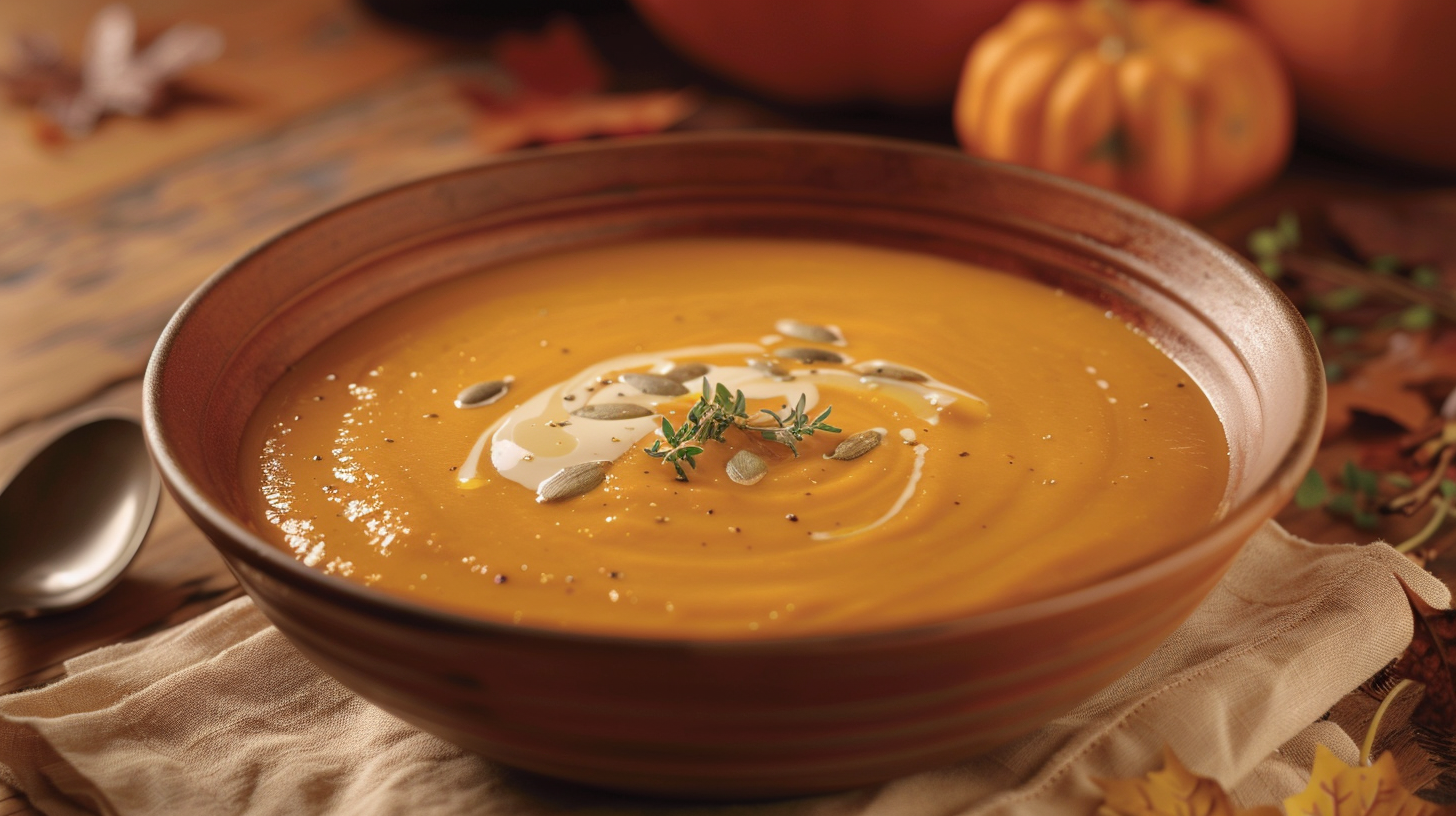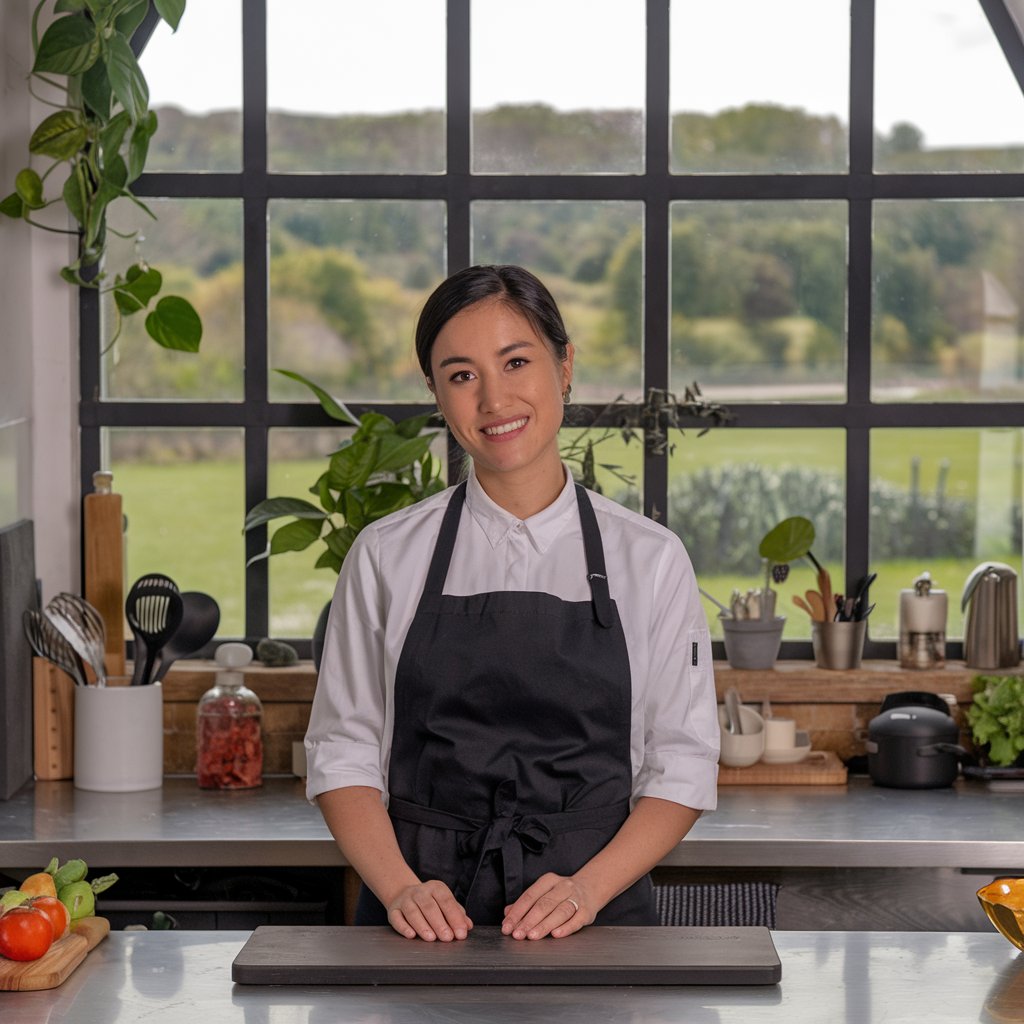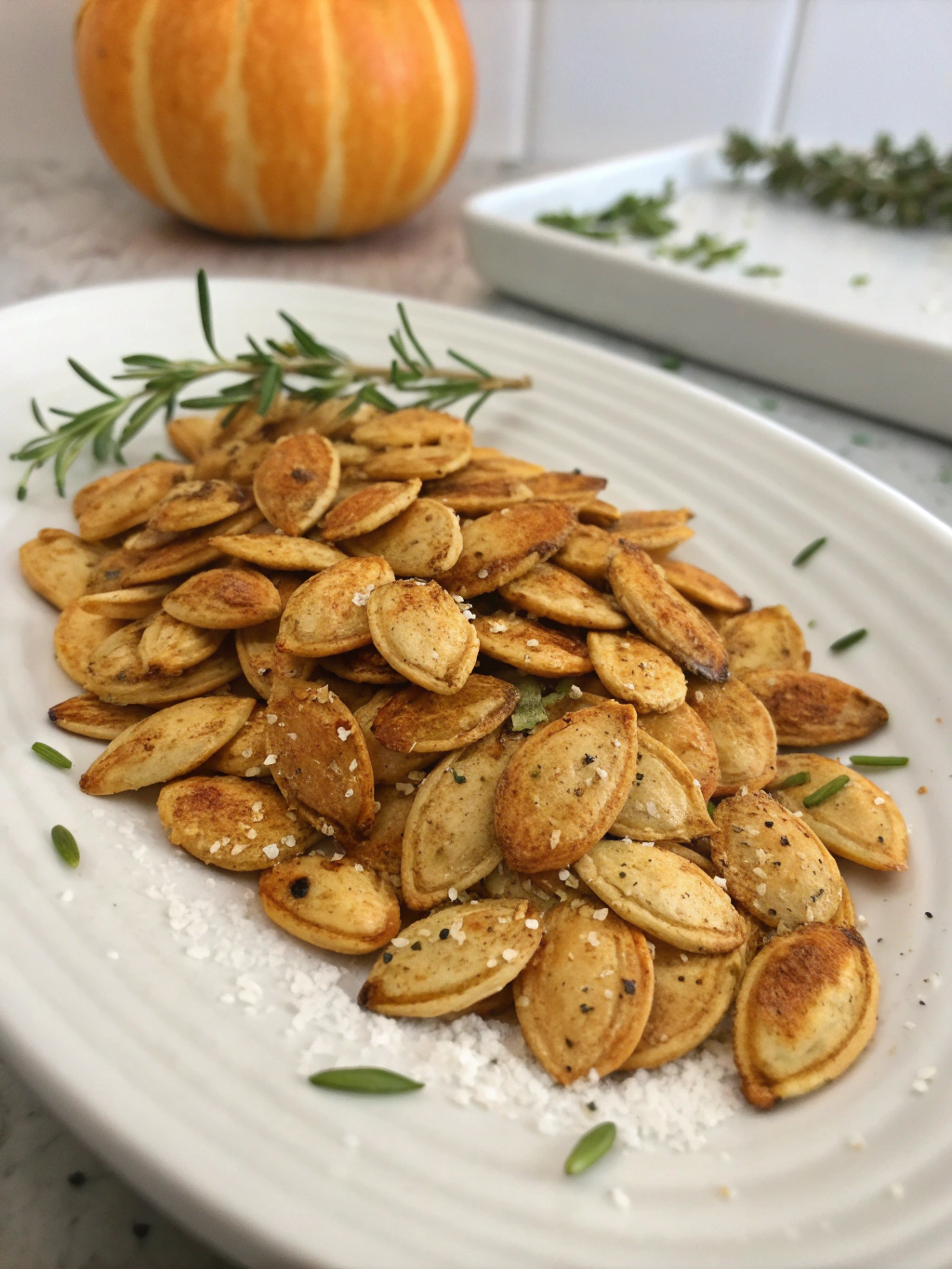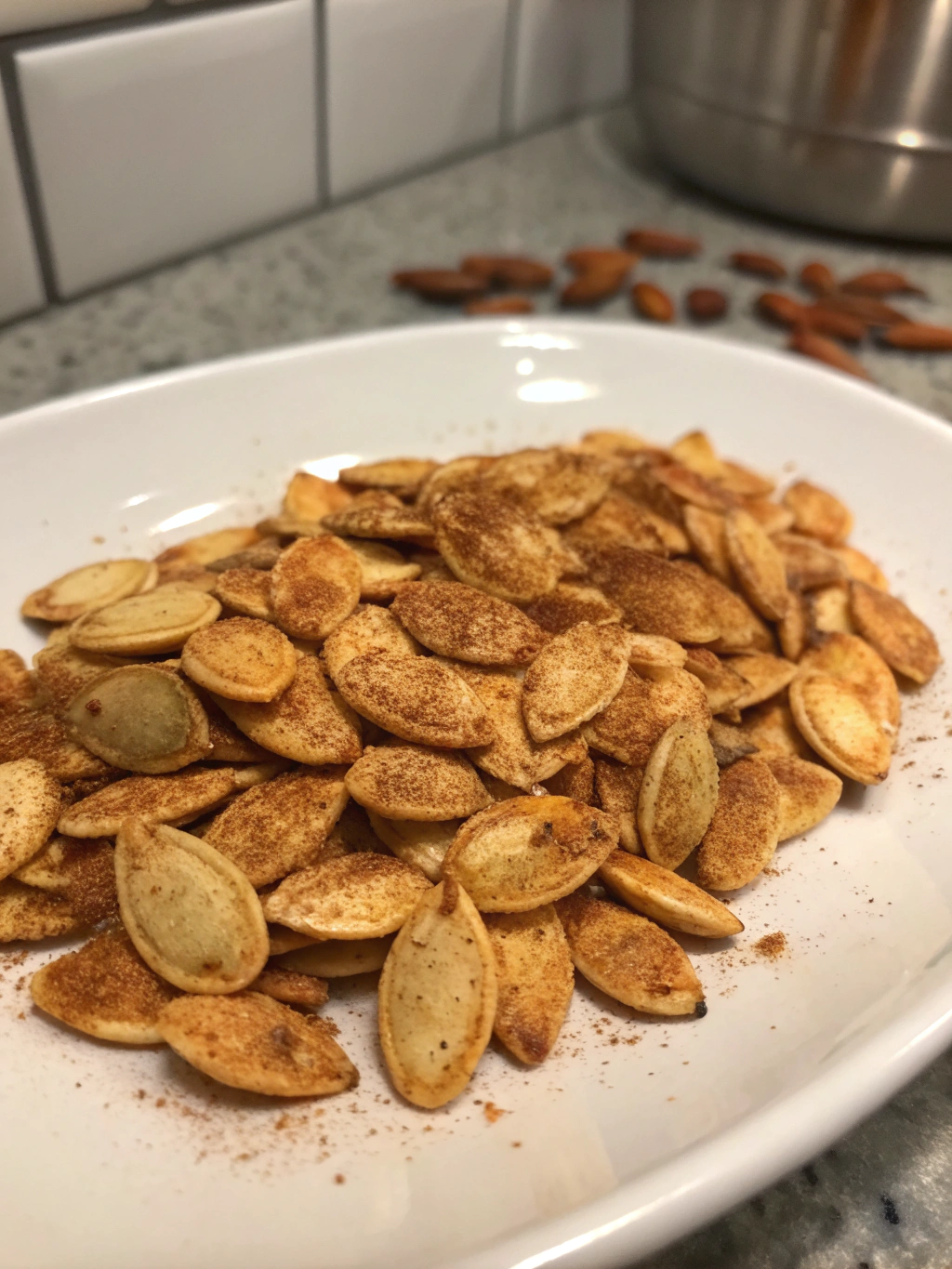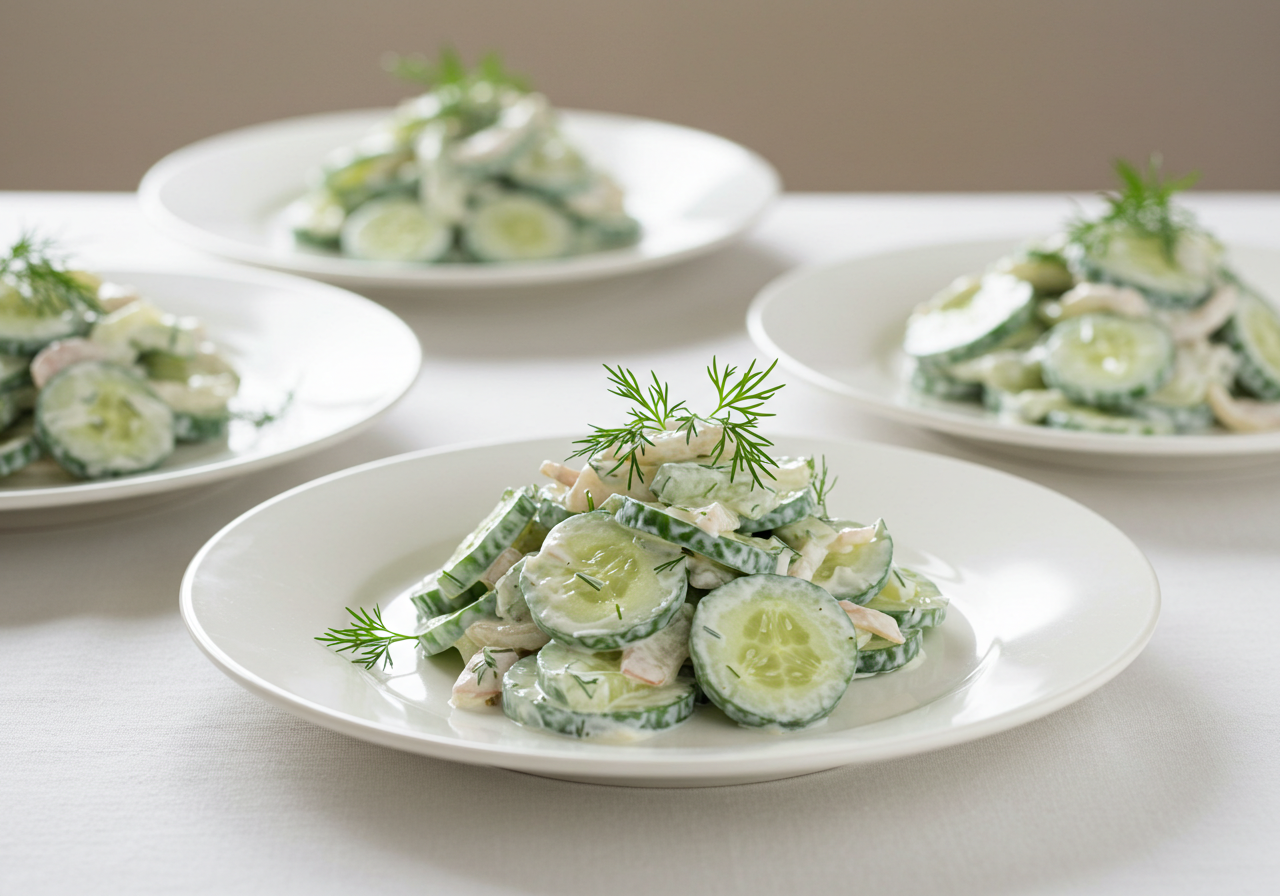There’s nothing quite like the comforting warmth of pumpkin soup on a crisp autumn evening or a chilly winter afternoon. It’s a dish that feels like a hug in a bowl, bringing together the natural sweetness of pumpkins, a medley of aromatic spices, and a creamy texture that’s irresistibly satisfying. Pumpkin soup isn’t just about flavor, though—it’s also packed with nutrients, making it a wholesome option for any meal.
But here’s the thing: not all pumpkin soups are created equal. Some turn out too watery, while others lack the depth of flavor that makes this dish shine. That’s why we’ve crafted this step-by-step guide to help you create the perfect pumpkin soup every time. Whether you’re aiming for a traditional recipe, a spicy variation, or even a vegan twist, this guide covers it all.
And the best part? Pumpkin soup is incredibly versatile. It’s an excellent choice for entertaining guests, meal prepping, or even a cozy dinner-for-one. From the type of pumpkin you should use to expert-level tips for balancing flavors, this guide has everything you need to elevate your soup game. Ready to make a bowl of liquid gold? Let’s dive in.
Ingredients for Pumpkin Soup
Key Ingredients
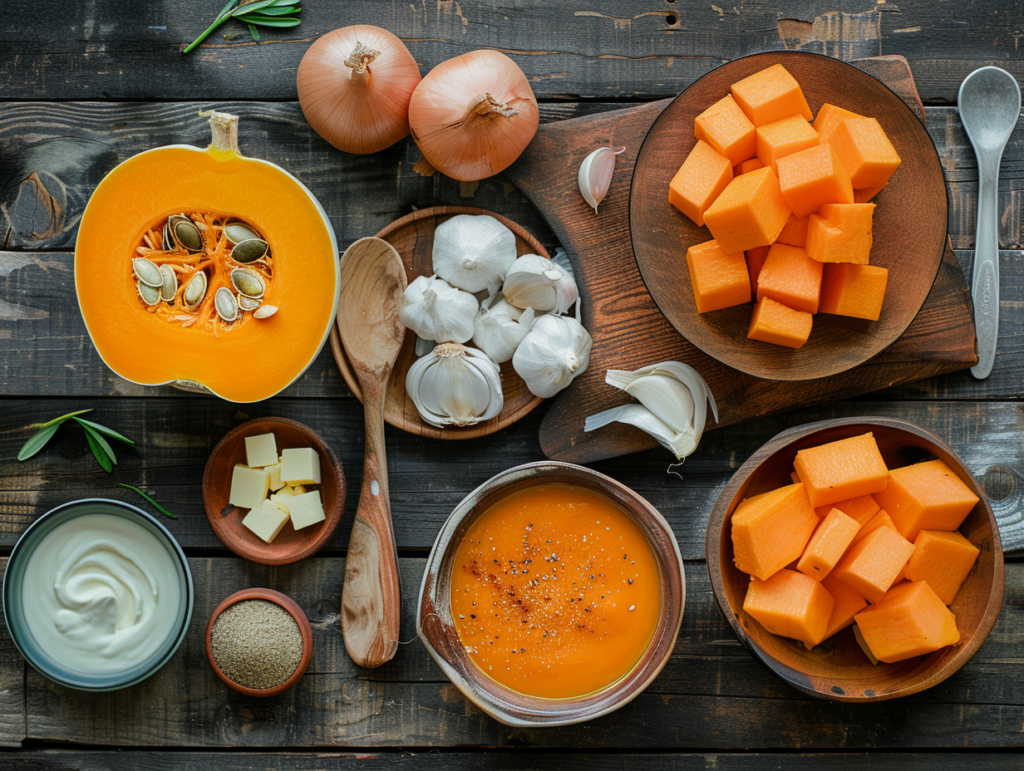
The star of the dish is, of course, the pumpkin. Look for varieties like sugar pumpkins or kabocha squash, which are known for their natural sweetness and creamy texture. You’ll also need onions and garlic to build a savory base. Add spices like cinnamon, nutmeg, or cumin to bring out warm, earthy notes, and don’t forget a good-quality vegetable or chicken stock for depth of flavor.
Optional Additions
Want to take your soup to the next level? Stir in cream or coconut milk for richness. Fresh herbs like thyme, sage, or parsley can add a burst of freshness, while toppings like toasted pumpkin seeds or croutons create delightful texture.
Tools and Equipment Needed
Essential Kitchen Tools
To make pumpkin soup, you’ll need a sharp knife to cut through the pumpkin, a sturdy cutting board, and a stockpot or saucepan for cooking. An immersion blender is your best friend for achieving a silky-smooth texture, but a regular blender works just as well.
Nice-to-Have Additions
If you want to get fancy, a ladle makes serving easier, and soup bowls with a rustic design can enhance presentation.
Step-by-Step Guide to Making Pumpkin Soup
Preparing the Pumpkin
Start by slicing the pumpkin in half and scooping out the seeds. Peel the skin (a vegetable peeler or knife works well) and cut the flesh into small cubes. If you want an added layer of flavor, roast the pumpkin cubes in the oven with a drizzle of olive oil until they’re tender and slightly caramelized.
Cooking the Soup Base
In your saucepan or stockpot, sauté diced onions and garlic in a bit of oil or butter until fragrant. Add your roasted pumpkin (or raw cubes) and spices, then pour in your stock. Let everything simmer until the pumpkin is soft enough to mash with a spoon.
Blending and Adjusting Consistency
Using an immersion blender, blend the soup until it’s smooth. If the consistency is too thick, add more stock or water a little at a time until you achieve the perfect creaminess.
Tips for Perfecting Your Pumpkin Soup
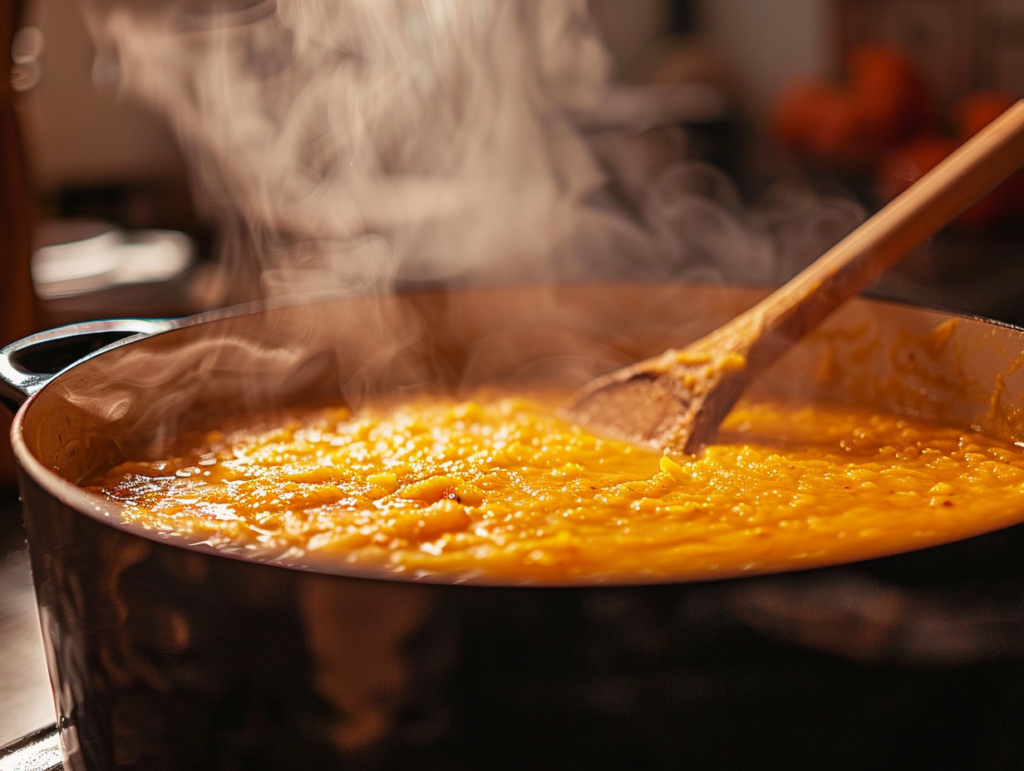
Balancing Flavors
Taste as you go! If the soup feels too sweet, balance it with a pinch of salt or a splash of lemon juice. For a savory twist, consider adding a touch of smoked paprika or a dash of soy sauce.
Enhancing Presentation
Serve your soup with a dollop of cream, a drizzle of olive oil, or a sprinkle of roasted seeds. Pair it with crusty bread, and you’ve got yourself a restaurant-worthy dish.
Variations of Pumpkin Soup
Vegan Pumpkin Soup
Making a vegan pumpkin soup is simple and delicious. Replace dairy ingredients like cream with coconut milk or almond milk. These substitutes not only make the soup rich and creamy but also add a subtle nutty or tropical flavor. Add nutritional yeast for a cheesy undertone or sprinkle some toasted nuts on top for extra crunch.
For protein, consider blending in cooked red lentils or topping the soup with roasted chickpeas. This version is just as hearty and satisfying, proving you don’t need dairy to create a silky, flavorful soup.
Spicy Pumpkin Soup
Love a little kick? Spicy pumpkin soup is the perfect variation for those who enjoy bold flavors. Add chili flakes, cayenne pepper, or even a fresh jalapeño to the soup base as it cooks. Another great option is stirring in a tablespoon of red curry paste, which pairs beautifully with the sweetness of the pumpkin.
Garnish the finished soup with a drizzle of spicy chili oil or a few slices of fresh red chili for presentation and extra heat.
Thai-Style Pumpkin Soup
For a Thai-inspired twist, incorporate coconut milk, fresh ginger, lemongrass, and lime juice into your pumpkin soup. These ingredients add a fragrant and tangy depth that’s characteristic of Thai cuisine. Add a tablespoon of fish sauce (or soy sauce for a vegan option) to deepen the umami flavors. Top the soup with fresh cilantro and crushed peanuts for a vibrant and alluring dish.
Health Benefits of Pumpkin Soup
Pumpkin soup isn’t just delicious; it’s also a nutritional powerhouse! Pumpkins are loaded with vitamins, especially vitamin A, which supports good vision, healthy skin, and a robust immune system. The soup is naturally low in calories, making it a great option for anyone looking to enjoy comfort food without overindulging.
Additionally, pumpkin is high in antioxidants like beta-carotene, which can help fight inflammation and reduce the risk of chronic diseases. Pairing it with other nutrient-dense ingredients, such as garlic and onions, further boosts its health benefits.
Common Mistakes to Avoid
Overcooking or Undercooking the Pumpkin
Cooking the pumpkin just right is key. Overcooking can make the soup too mushy and dull in flavor, while undercooking leaves a gritty texture. Always test the pumpkin with a fork before blending.
Using the Wrong Pumpkin Variety
Not all pumpkins are created equal. Avoid using carving pumpkins (the kind used for jack-o’-lanterns) as they’re often stringy and watery. Opt for culinary pumpkins like sugar pumpkins, kabocha, or even butternut squash.
Skipping the Blending Step
A smooth texture is essential for pumpkin soup. Skipping the blending or using an inadequate tool can leave you with a lumpy soup. If you don’t have a blender, use a potato masher and pass the soup through a sieve for a similar result.
Serving Suggestions
Pumpkin soup pairs beautifully with a variety of sides and garnishes. Here are some ideas:
- Sides: Serve with warm crusty bread, garlic bread, or a side salad for a complete meal.
- Drinks: Pair it with a glass of white wine, such as Sauvignon Blanc, or a hot drink like spiced cider for the ultimate cozy experience.
- Garnishes: Add a dollop of sour cream or Greek yogurt, sprinkle toasted pumpkin seeds, or swirl in some chili oil for a vibrant look and extra flavor.
Storing and Reheating Pumpkin Soup
Storage Tips
Pumpkin soup stores exceptionally well, making it a great meal prep option. Allow the soup to cool completely before transferring it to an airtight container. It can stay fresh in the fridge for up to 4-5 days.
For longer storage, freeze the soup in portions. Use freezer-safe containers or resealable bags. Be sure to leave some space for expansion as the soup freezes.
Reheating Techniques
To reheat, simply transfer the soup to a saucepan and warm over low heat, stirring occasionally to prevent scorching. If the soup thickens after storage, add a splash of water or stock while reheating. For reheating in a microwave, stir the soup halfway through to ensure even heating.
Conclusion
Pumpkin soup is more than just a meal—it’s a celebration of fall flavors, a boost of nutrition, and a culinary canvas waiting for your personal touch. Whether you stick to the classic creamy version or experiment with bold flavors like Thai-inspired spices or spicy chili heat, pumpkin soup is one of those dishes that never goes out of style.
The beauty of this dish lies in its simplicity and versatility. With just a few ingredients, some basic kitchen tools, and a little bit of love, you can create a comforting masterpiece that’s perfect for any occasion. Plus, it’s a great way to make use of seasonal produce and get creative with toppings and sides.
Now it’s your turn to try it out! Whether you’re a pumpkin soup pro or making it for the first time, we hope this guide inspires you to enjoy this timeless dish in new and exciting ways. So, grab that pumpkin, fire up your stove, and savor the cozy flavors of homemade pumpkin soup.
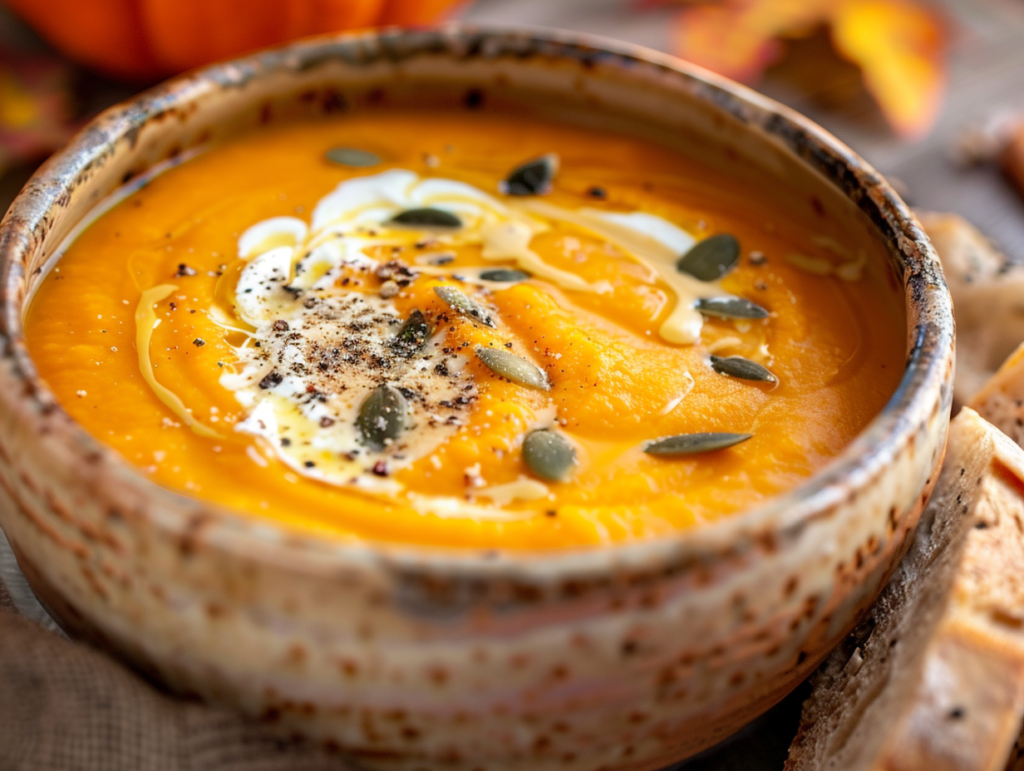
FAQs
1. What type of pumpkin works best for soup?
The best pumpkins for soup are smaller, sweeter varieties like sugar pumpkins or pie pumpkins. These have a creamy texture and natural sweetness that work beautifully in soups. Avoid large carving pumpkins, as they tend to be stringy and watery.
2. Can I make pumpkin soup without a blender?
Yes, you can! If you don’t have a blender, simply use a potato masher to break down the pumpkin pieces. For a smoother consistency, push the soup through a fine mesh sieve. Alternatively, a food processor can also get the job done.
3. How can I make pumpkin soup spicier?
To add heat, consider using spices like cayenne pepper, chili flakes, or a fresh chili. You can also incorporate a tablespoon of red curry paste for a bold, spicy kick. Adjust the spice level to suit your taste buds.
4. Can pumpkin soup be frozen?
Absolutely! Pumpkin soup freezes exceptionally well. Let the soup cool completely before transferring it to freezer-safe containers or resealable bags. It can last up to three months in the freezer. When reheating, add a splash of stock or water if the soup has thickened.
5. What are some toppings that go well with pumpkin soup?
Toppings can elevate your pumpkin soup to a whole new level. Popular options include toasted pumpkin seeds, croutons, a drizzle of olive oil or cream, fresh herbs like parsley or thyme, and even a sprinkle of grated Parmesan cheese. For extra texture and crunch, try crispy bacon bits or roasted chickpeas.
If you’re a fan of hearty soups like this pumpkin soup recipe, you might also enjoy exploring other cozy meal ideas. Consider trying this 7-bean soup for a protein-packed, nutritious alternative or this slow cooker lentil stew for a hands-free, comforting dinner. For a unique twist, pair your soup with a slice of freshly baked bread, inspired by this recipe for dinner buns without yeast, which makes a perfect sidekick to any bowl of soup.

